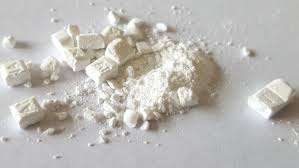The global opioid crisis has taken many dark turns over the past two decades. From prescription painkiller abuse to the rise of illicit fentanyl, each phase has brought more potent substances and more devastating consequences. Among the latest and most dangerous drugs emerging on the scene is Protonitazene—a synthetic opioid that is raising alarm across public health and law enforcement communities.
What is Protonitazene?
Protonitazene is a synthetic opioid, first synthesized in the 1950s by pharmaceutical chemists at a Swiss company known as CIBA. It belongs to a class of opioids called benzimidazole derivatives, which are structurally different from traditional opioids like morphine or heroin, yet are often far more potent.
Originally developed as part of a research effort to create effective analgesics (pain relievers), Protonitazene was never approved for medical use. Its high potency and potential for respiratory depression made it unsuitable for therapeutic applications. However, decades later, it has resurfaced—not in hospitals, but on the streets and in the shadows of the illegal drug market.
A Potency Far Beyond Fentanyl
Fentanyl has become a household name due to its role in countless overdose deaths, but Protonitazene may be even more deadly. According to studies by toxicologists and law enforcement, Protonitazene is estimated to be 20 to 100 times more potent than morphine, and in some cases, even more powerful than fentanyl.
Such extreme potency means that even a tiny amount—less than a grain of salt—can be lethal. The danger is exacerbated by the fact that Protonitazene is often mixed with other drugs, such as heroin, counterfeit pills, or even cocaine, without the user’s knowledge. This leads to accidental overdoses among people who have no idea they’re ingesting such a powerful substance.
How is Protonitazene Being Used?
Protonitazene is not commonly found in traditional drug supplies. Rather, it is being illegally synthesized, often in clandestine laboratories overseas, and shipped to countries like the United States, Canada, and various parts of Europe. It may appear in powder form, pressed into counterfeit tablets, or mixed into other street drugs.
One of the challenges is that drug users and even first responders may not recognize it. Standard toxicology screens might not detect Protonitazene unless specific tests are used. This delay in identification can hinder treatment and complicate overdose response.
The Rise of Novel Synthetic Opioids
Protonitazene is part of a larger trend: the rise of novel psychoactive substances (NPS). These are synthetic compounds designed to mimic the effects of traditional drugs while evading legal restrictions. Because Protonitazene was not initially listed as a controlled substance in many countries, it remained under the radar.
However, as overdoses involving this compound began to appear—particularly in the United States—governments and health agencies started taking notice. In 2021, the U.S. Drug Enforcement Administration (DEA) issued alerts and began classifying Protonitazene as a Schedule I substance, meaning it has no accepted medical use and a high potential for abuse.
The Human Cost
The impact of Protonitazene is tragically real. Emergency rooms have reported overdose cases where patients required multiple doses of naloxone (Narcan)—the opioid reversal drug—due to the extreme potency of the substance. In some cases, even naloxone is not enough if the person has ingested a high dose.
This presents a new challenge for harm reduction efforts. Outreach workers and first responders now have to carry more naloxone and administer it more aggressively. Users, meanwhile, are often unaware they’re consuming something that could kill them instantly.
Addressing the Threat
-
Public Awareness: People need to understand that dangerous new drugs like Protonitazene are out there. Education campaigns targeted at at-risk communities can help reduce accidental overdoses.
-
Improved Testing: Forensic labs and emergency services need access to advanced drug testing tools that can detect newer synthetic opioids quickly and accurately.
-
Stronger Regulation: Governments must move quickly to classify and restrict new substances as they appear. Protonitazene has already been scheduled in the U.S., but global coordination is needed to prevent its spread.
-
Harm Reduction: Increasing the availability of naloxone, safe consumption spaces, and drug-checking services can save lives.
-
Treatment Access: People struggling with opioid use disorder need comprehensive treatment, including medication-assisted therapy (MAT), mental health support, and long-term recovery programs.
The emergence of Protonitazene is a grim reminder of how quickly the drug landscape can change. With each new synthetic compound, the stakes grow higher—not just for users, but for families, communities, and healthcare systems.
As we continue to battle the opioid epidemic, we must stay vigilant, adaptable, and compassionate. The solution won’t come from law enforcement alone, nor from medical science in isolation. It will take a coordinated response across public health, policy, and community outreach to combat this deadly new chapter in the opioid crisis.
Contact Us
WhatsApp: +86 171 0282 1847
Email: info@nitazenechems.com
Website: https://nitazenechems.com/



Comments
Post a Comment